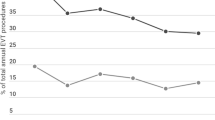Abstract
Background
An increased risk of aspiration pneumonia among acute ischemic stroke patients following intubation for endovascular treatment may explain the higher rates of poor outcomes among patients requiring general anesthesia compared with those performed under local sedation.
Methods
Rates of aspiration pneumonia and its contribution to poor outcome at discharge (modified Rankin score ≥3), and in-hospital mortality were analyzed among endovascularly treated acute ischemic stroke patients at two university-affiliated comprehensive stroke centers. Logistic regression model was used to assess the contribution of intubation and aspiration pneumonia on poor outcome after adjusting for potential confounders.
Results
There were 136 acute ischemic stroke patients who received endovascular treatment: 83 patients received local sedation without intubation and 53 patients were intubated. The rates of aspiration pneumonia were 12 (14%) in endovascularly treated patients not intubated, and 12 (23%) in endovascularly treated intubated patients. Rates of poor outcomes were 46 (55%) in the non-intubated endovascularly treated patients, and 44 (83%) in intubated endovascularly treated patients. After adjusting for age, gender, National Institutes of Health Stroke Scale (NIHSS) score strata, poor outcome at discharge (OR 2.9, 95% CI 1.2–7.4) (P = 0.0243) and in-hospital mortality (OR 4.5, 95% CI 1.5–12.5) (P = 0. 0.0046) were significantly higher among intubated patients. After adjusting for pneumonia, the effect of intubation on poor outcome at discharge (OR 2.7, CI 1.1–7.1) (P = 0.0006) and in-hospital mortality (OR 4.4, CI 1.6–12.5) (P = 0.00051) remained significant in the multivariate model.
Conclusions
Careful consideration should be exercised when emergently intubating acute ischemic stroke patients for endovascular treatment, because the rate of death and disability appears to be high. This increased rate is not explained by higher rates of subsequent aspiration pneumonia.
Similar content being viewed by others
References
Furlan A, Higashida R, Wechsler L, Gent M, Rowley H, Kase C, Pessin M, Ahuja A, Callahan F, Clark WM, Silver F, Rivera F. Intra-arterial prourokinase for acute ischemic stroke. The proact ii study: A randomized controlled trial. Prolyse in acute cerebral thromboembolism. JAMA. 1999;282:2003–11.
Arnold M, Kappeler L, Nedeltchev K, Brekenfeld C, Fischer U, Keserue B, Remonda L, Schroth G, Mattle HP. Recanalization and outcome after intra-arterial thrombolysis in middle cerebral artery and internal carotid artery occlusion: Does sex matter? Stroke. 2007;38:1281–5.
Lin R, Vora N, Zaidi S, Aleu A, Jankowitz B, Thomas A, Gupta R, Horowitz M, Kim S, Reddy V, Hammer M, Uchino K, Wechsler LR, Jovin T. Mechanical approaches combined with intra-arterial pharmacological therapy are associated with higher recanalization rates than either intervention alone in revascularization of acute carotid terminus occlusion. Stroke. 2009;40:2092–7.
Mayer SA, Copeland D, Bernardini GL, Boden-Albala B, Lennihan L, Kossoff S, Sacco RL. Cost and outcome of mechanical ventilation for life-threatening stroke. Stroke. 2000;31:2346–53.
Smith WS, Sung G, Saver J, Budzik R, Duckwiler G, Liebeskind DS, Lutsep HL, Rymer MM, Higashida RT, Starkman S, Gobin YP, Frei D, Grobelny T, Hellinger F, Huddle D, Kidwell C, Koroshetz W, Marks M, Nesbit G, Silverman IE. Mechanical thrombectomy for acute ischemic stroke: Final results of the multi merci trial. Stroke. 2008;39:1205–12.
Ueda T, Sakaki S, Kumon Y, Ohta S. Multivariable analysis of predictive factors related to outcome at 6 months after intra-arterial thrombolysis for acute ischemic stroke. Stroke. 1999;30:2360–5.
Abou-Chebl A, Lin R, Hussain MS, Jovin TG, Levy EI, Liebeskind DS, Yoo AJ, Hsu DP, Rymer MM, Tayal AH, Zaidat OO, Natarajan SK, Nogueira RG, Nanda A, Tian M, Hao Q, Kalia JS, Nguyen TN, Chen M, Gupta R. Conscious sedation versus general anesthesia during endovascular therapy for acute anterior circulation stroke: preliminary results from a retrospective, multicenter study. Stroke. 2010;41:1175–9.
Rosenberg M, Weaver J. General anesthesia. Anesth Prog. 1991;38:172–86.
Hassan AE, Zacharatos H, Rodriguez GJ, Vazquez G, Miley JT, Tummala RP, Suri MF, Taylor RA, Qureshi AI. A comparison of computed tomography perfusion-guided and time-guided endovascular treatments for patients with acute ischemic stroke. Stroke. 2010;41:1673–8.
McDonagh DL, Olson DM, Kalia JS, Gupta R, Abou-Chebl A, Zaidat OO. Anesthesia and sedation practices among neurointerventionalists during acute ischemic stroke endovascular therapy. Front Neurol. 2010;1:118.
Jumaa MA, Zhang F, Ruiz-Ares G, Gelzinis T, Malik AM, Aleu A, Oakley JI, Jankowitz B, Lin R, Reddy V, Zaidi SF, Hammer MD, Wechsler LR, Horowitz M, Jovin TG. Comparison of safety and clinical and radiographic outcomes in endovascular acute stroke therapy for proximal middle cerebral artery occlusion with intubation and general anesthesia versus the nonintubated state. Stroke. 2010;41:1180–4.
Ginsberg MD, Pulsinelli WA. The ischemic penumbra, injury thresholds, and the therapeutic window for acute stroke. Ann Neurol. 1994;36:553–4.
Author information
Authors and Affiliations
Corresponding author
Rights and permissions
About this article
Cite this article
Hassan, A.E., Chaudhry, S.A., Zacharatos, H. et al. Increased Rate of Aspiration Pneumonia and Poor Discharge Outcome Among Acute Ischemic Stroke Patients Following Intubation for Endovascular Treatment. Neurocrit Care 16, 246–250 (2012). https://doi.org/10.1007/s12028-011-9638-0
Published:
Issue Date:
DOI: https://doi.org/10.1007/s12028-011-9638-0




